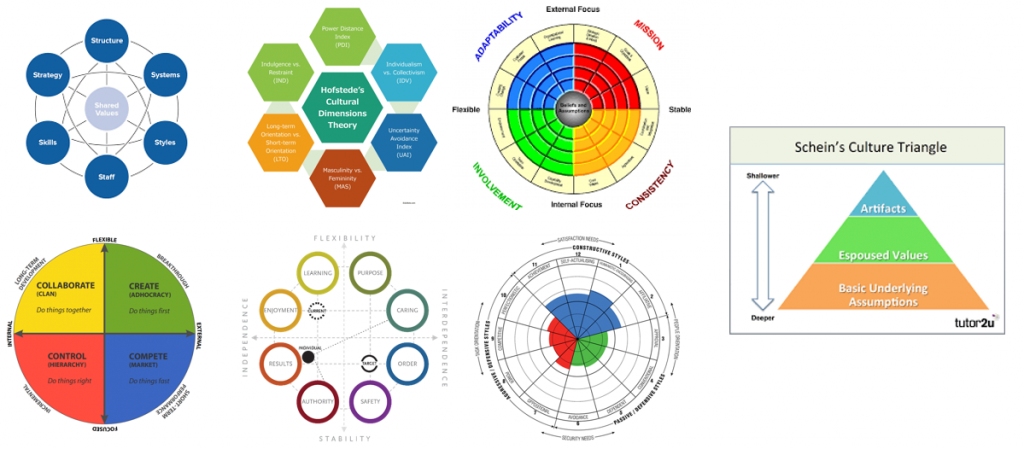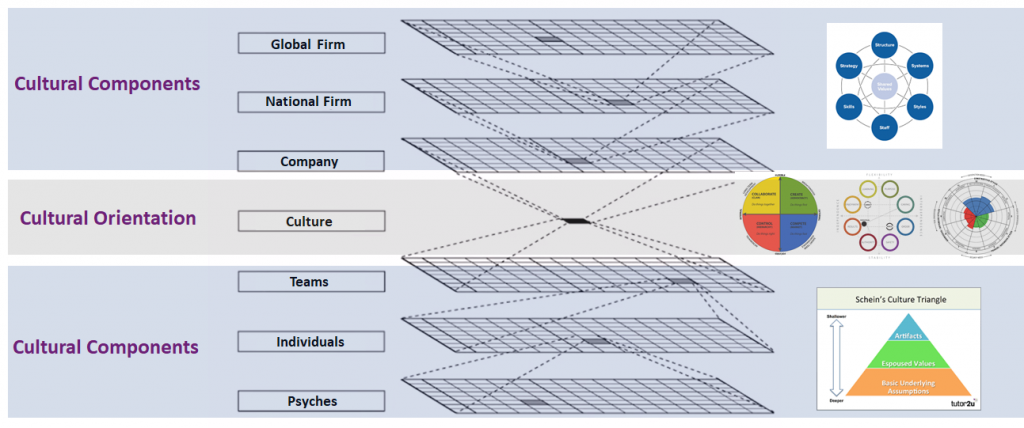A high-level theory for understanding and applying organisational culture
Organisational culture gets talked about a lot these days. Whether it be a business leader looking to optimise and improve how their people work together to execute the strategy or someone trying to reduce the chance of risky behaviour occurring, organisational culture has become widely applied to many HR challenges. But what exactly is organisational culture and how can we utilise it to help solve our challenges. In this article, I dispel some of the confusion around the topic and offer a clearer way of thinking and talking about organisational culture so that you can begin making more impactful changes today.
Problem 1: Models Galore
Google organisational culture and you can quickly become overwhelmed with the expanse of models claiming to measure it, each with evidence to back up their claims.
A 2009 review of Instruments for the Exploration of Organisational Culture found over 50.
You may know some of these more famous models below, such as Denizen, Shein or Hofstede’s models.

As I have pointed out in my Making Sense of Change Management article, this is another case of The Blind Men and The Elephant. Different people attempting to understand a single emergent construct from a single viewpoint. This is not to say these models aren’t useful, they have shed light on two vital facets of culture which I will explain later.
Problem 2: Everything is Culture
Culture can be discussed across multiple levels of abstraction making this nebulous concept difficult to pin down. Other words such as Risk or Safety tend to be added in front of the word Culture to mean “the overall way of how things are around here”. Whilst culture itself might be described as the problem, discussions can cover a whole range of topics from leadership, to processes, to technological systems to social norms. If it wasn’t hard enough trying to understand what it is, it can seem even harder to change it.
This all occurs because culture is an emergent property: Emergent properties are things that don’t exist in individual pieces of a system but do exist for the system as a whole. For example, each individual water molecule doesn’t have a tide but the whole ocean does. The whole is greater than the sum of its parts. In the same way, the organisational culture we see emerges out of all of these components.

So are all interventions cultural interventions? Yes, in that everything emerges into the culture of an organisation, but also no in that true culture change comes from an amalgamation of multiple interventions. In the same way that we wouldn’t say influencing one molecule changes the tide of an ocean. We have to make bigger splashes.
The Solution: Distinguish between Cultural Orientation and Cultural Components
To address the above problems and find our way out of the woods, we need a new taxonomy of organisational culture. A distinction needs to be made between the emergent property of culture and the signature components which drive it. Using such a distinction can help us facilitate more precise and valuable conversations about what people mean when they say culture and prevent abstract conversations about the “vibe of a place”. The emergent property I call Cultural Orientation and the other components, naturally, Cultural Components.

It is from this new perspective we can begin to sort through the many models of culture. For example models like OCAI and Denizen are models of cultural orientation rather than components. Whereas McKinsey’s 7’s addresses various components to consider when seeking to change cultural orientation.
What about Microcultures do they still exist in this taxonomy?
In short, I would prefer not. We have had a good word for the emergent way of how a team works together for years, we call it Team Dynamics. Teams usually have very explicit goals which mean rather than an overarching orientation that aligns to the strategy they are likely to be more focused on the specific practical interactions that bring about an outcome.
However, as organisations grow and teams become larger “teams-of-teams” with differing goals, a case could be made for a sort of microculture amongst those teams-of-teams. It’s really a question of size. Like the ocean analogy, how many molecules before you lose track and should just call it an ocean?
